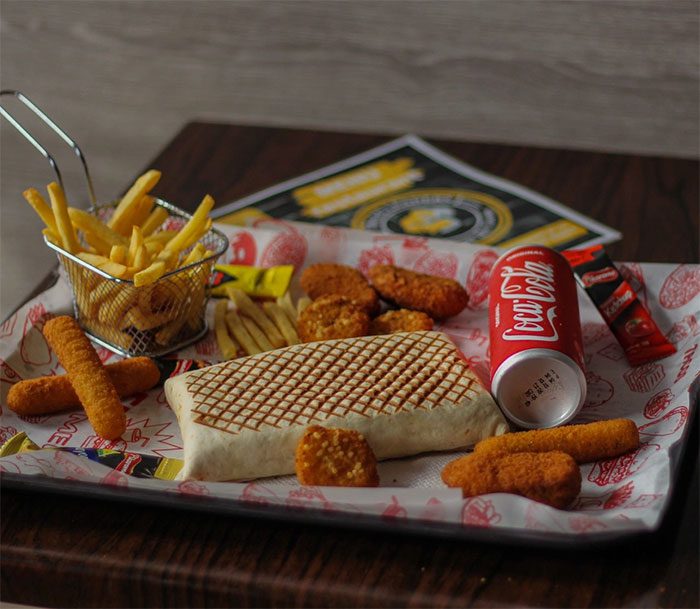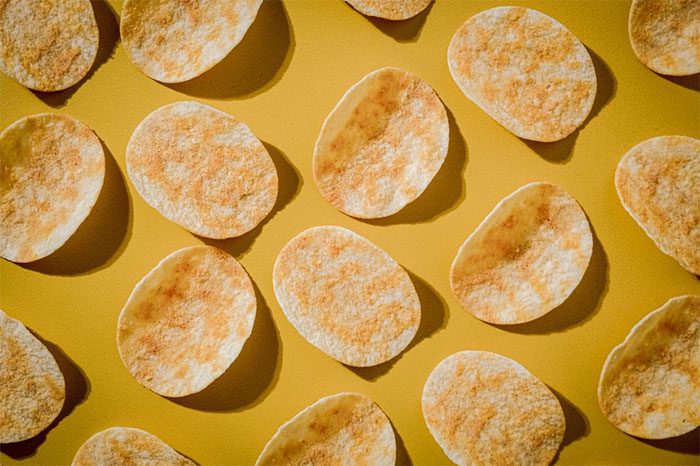No type of food is entirely bad. However, some foods that do not provide benefits to the body, often referred to as “empty calories”, can inadvertently harm health.
Empty Calorie Foods
A sad reality is that many convenient, quick, and tasty foods, as perceived by many young people today, including H., mostly belong to the “empty calorie” category.
In this context, calories are the unit of measurement for energy in various foods. They refer to the energy the body uses for basic metabolic activities such as respiration, circulation, digestion, and physical activities.
Master, Doctor Ngo Thi Ha Phuong from the Nutrition Communication Education Center, National Institute of Nutrition, defines: “Foods are considered empty calories when they provide only energy and contain little or no essential vitamins and minerals for the body.”

It is not hard to notice the presence of french fries and soda in fast food “combos.” (Illustration: khalid_boutchich).
This is also the reason why excessive consumption of these foods can lead to weight gain while lacking essential vitamins and minerals.
According to Dr. Phuong, empty calories often come from sugary drinks, processed foods, ultra-processed foods, and fast food.
The components of these foods typically include high amounts of free sugars, unhealthy fats, providing a lot of energy but lacking fiber, healthy fats, and the necessary protein for growth, development, immune response, and metabolic activities of the body.
Previous studies have shown that consuming sugary drinks at a frequency of one can or more per day can lead to negative health effects such as increased risk of dental diseases, obesity, diabetes, cardiovascular diseases, and other metabolic disorders.
“Consuming sugary drinks is one of the main factors contributing to the rising rates of obesity. Sugary drinks do not provide the same feeling of fullness as solid foods with the same caloric content. This leads to higher consumption levels that are difficult to control,” Dr. Phuong emphasized.
Additionally, processed, ultra-processed foods and fast foods tend to contain high levels of salt, sugar, saturated fats, trans fats, are energy-dense, and include preservatives and other processed components.
“When consuming these foods, they immediately affect blood sugar levels, blood pressure, and increase inflammation, preventing the body from receiving adequate essential nutrients. In the long run, a diet high in these products can lead to digestive issues, immune problems, infections, cardiovascular health issues, obesity, and more,” she warned.
To identify foods with empty calories, the expert suggests that people should pay attention to reading nutrition labels and look for information on sugars, added sugars, saturated fats, trans fats, sodium, and their energy content.
Dr. Phuong provided some examples of foods that contain empty calories:

Reducing Opportunities to Consume Essential Nutritional Foods
Dr. Ngo Thi Ha Phuong stated: “When consuming foods with empty calories, we still receive energy to maintain metabolic activities and physical activities. However, the body will lack the essential nutrients required for growth and development. This is particularly important for children.”
The role of food is to provide nutrients that help the body develop, function normally, and stay healthy. Not only do they supply energy for activities, growth processes, and functions such as breathing, digestion, and thermogenesis, but these nutrients are also vital for development, healing, and maintaining the immune system.

Consuming many foods with empty calories reduces the opportunity to intake essential nutrients. (Illustration: jeff_siepman).
Specifically, they include three macronutrients: carbohydrates (which include starch, sugars, and fiber), lipids (fats), and proteins. Each nutrient plays a unique role.
Free sugars (part of the carbohydrate group) and some saturated fats and trans fats (part of the fat group) are the main components of foods containing empty calories, serving as energy sources.
When consuming a lot of empty calorie foods, the body primarily receives energy but very few other nutrients such as fiber, unsaturated fatty acids, and essential proteins.
“Moreover, empty calorie foods provide high energy levels, along with difficult-to-digest fats. Therefore, they will make the eater, especially children, less inclined to eat other foods,” Dr. Phuong noted.
In this case, the needs for vitamins, minerals, proteins, and healthy fats will not be adequately met, leading to children—who are in their growth phase—not receiving the necessary materials for optimal physical and mental development.
Alternatives
Dr. Phuong pointed out that in contrast to empty calories are nutrient-rich foods. These contain calories along with high levels of essential nutrients.
For children, the expert recommends avoiding trans fats and limiting saturated fats. However, beneficial fats for the heart, such as those found in certain nuts and avocados, can help create a feeling of fullness and reduce cravings.
“Empty calorie foods are often snacks consumed between meals. Therefore, we need to ensure that main meals provide adequate energy and balance nutrients,” the expert advises.
She also believes that we should pay attention to choosing good protein and fat sources. Consuming enough protein provides a feeling of fullness. Thus, we should include healthy protein sources in our diet, such as fish, beans, vegetables, and nuts.
Additionally, Dr. Phuong emphasizes the need to increase fruit intake. Fruits contain sugars but also provide many vitamins, antioxidants, water, and fiber.
The expert explains: “Fiber helps slow down and balance factors affecting blood sugar levels. The sweetness of fruits can replace sugary drinks and other processed foods. For this reason, we should consume whole fruits instead of fruit juices to enhance plant fiber intake.”


















































